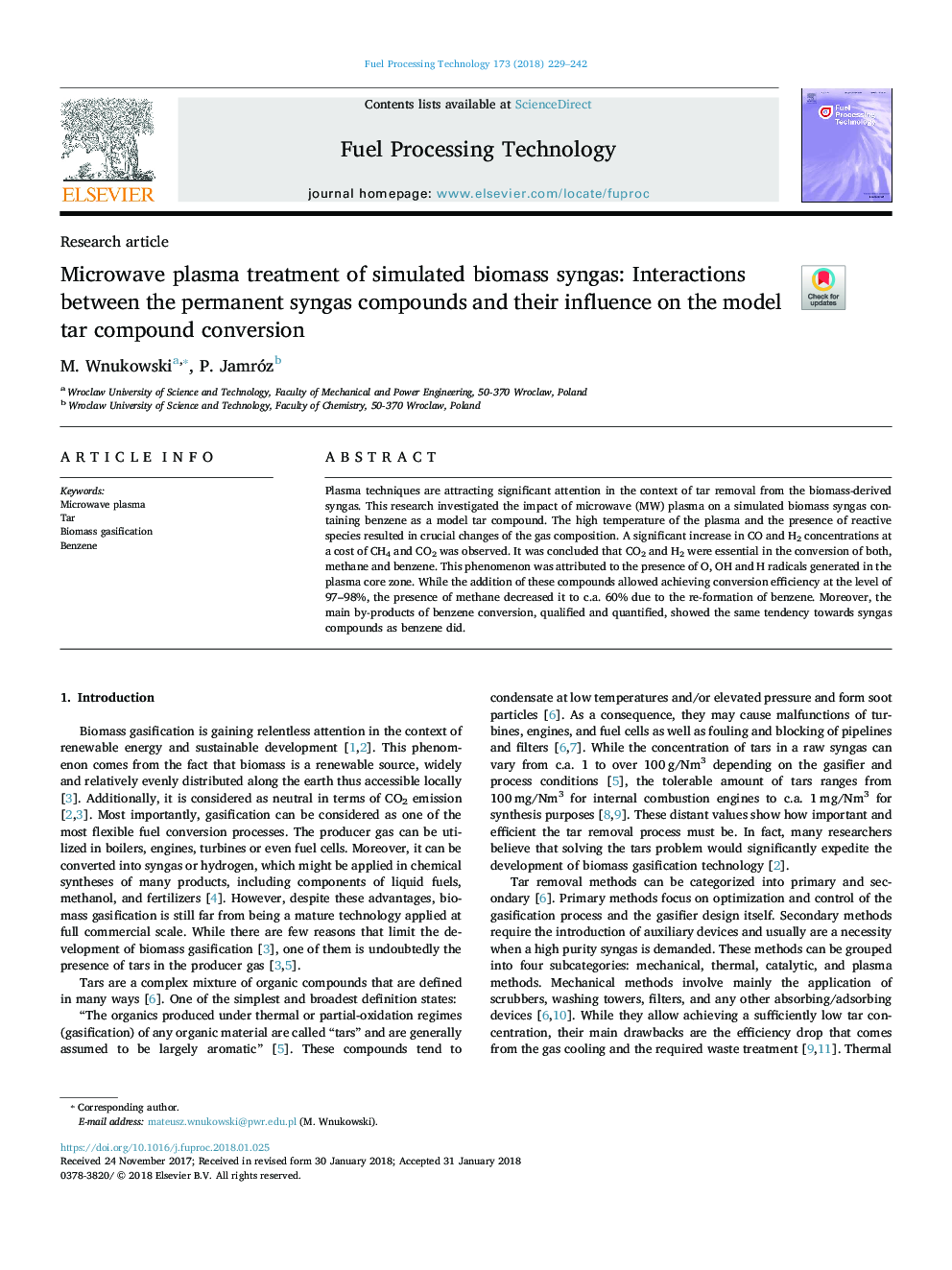| Article ID | Journal | Published Year | Pages | File Type |
|---|---|---|---|---|
| 6656452 | Fuel Processing Technology | 2018 | 14 Pages |
Abstract
Plasma techniques are attracting significant attention in the context of tar removal from the biomass-derived syngas. This research investigated the impact of microwave (MW) plasma on a simulated biomass syngas containing benzene as a model tar compound. The high temperature of the plasma and the presence of reactive species resulted in crucial changes of the gas composition. A significant increase in CO and H2 concentrations at a cost of CH4 and CO2 was observed. It was concluded that CO2 and H2 were essential in the conversion of both, methane and benzene. This phenomenon was attributed to the presence of O, OH and H radicals generated in the plasma core zone. While the addition of these compounds allowed achieving conversion efficiency at the level of 97-98%, the presence of methane decreased it to c.a. 60% due to the re-formation of benzene. Moreover, the main by-products of benzene conversion, qualified and quantified, showed the same tendency towards syngas compounds as benzene did.
Related Topics
Physical Sciences and Engineering
Chemical Engineering
Chemical Engineering (General)
Authors
M. Wnukowski, P. Jamróz,
